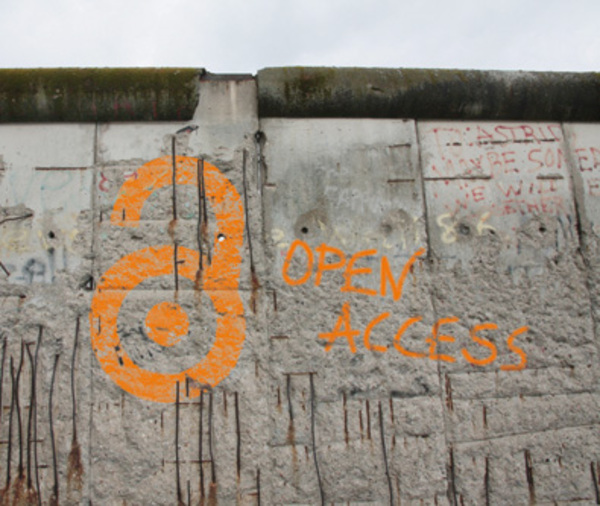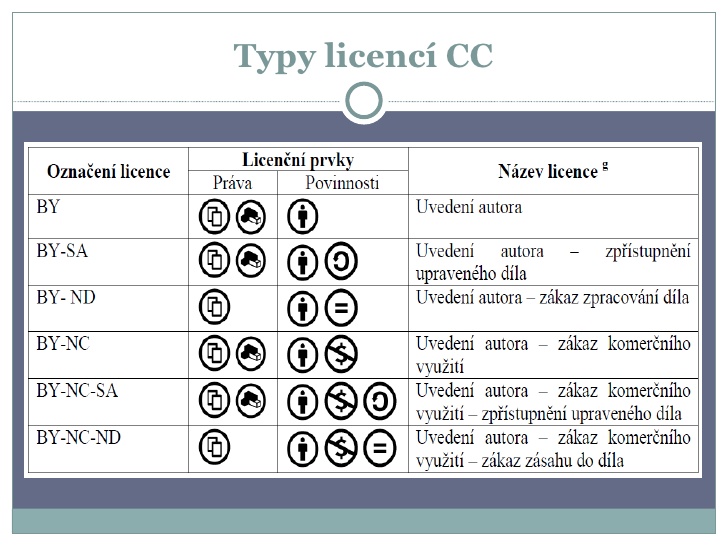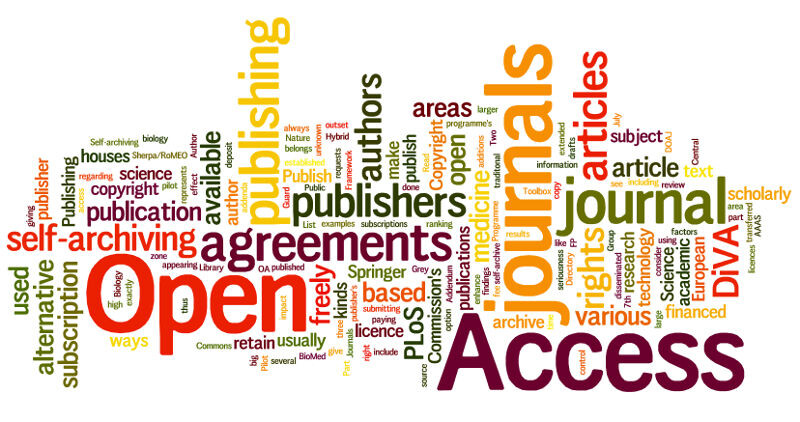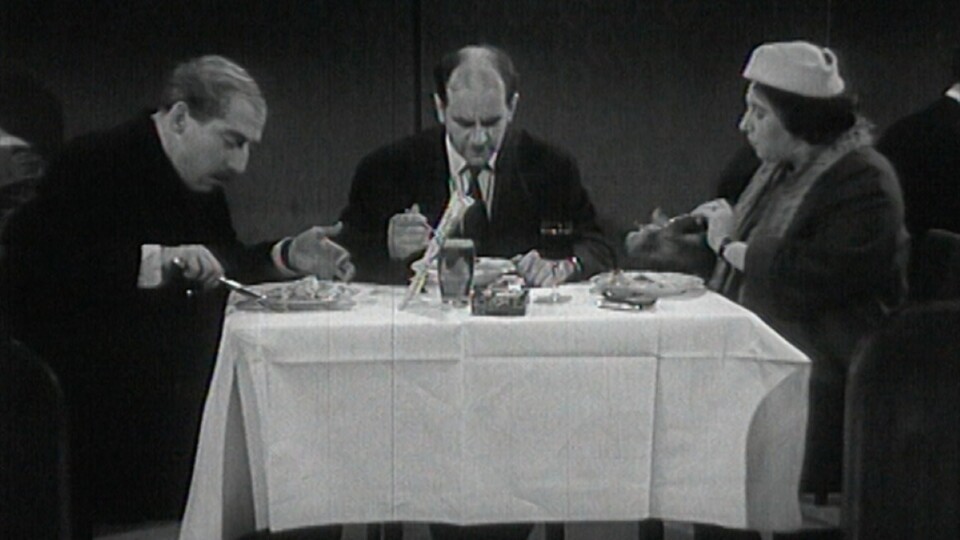What Should (Not) Be for Free and Why
The issue of what could or should be available for free in a modern society cannot be reduced merely to its economical aspect. It also represents a political or ideological statement, a legal issue and a cultural specific. On November 12, 2012, the former Czech president, Václav Klaus vetoed (unsuccessfully, as it turned out) the governmental bill of the Act on Audiovisual Works and the Support for Cinematography and on Amendment to Certain Other Acts (The Audiovisual Act) which has passed through the Parliament’s Chamber of Deputies and the Senate on the grounds that “the film industry is a standard business sector, not a public property, and therefore should not be funded from public sources, i.e. from the money of those who would have never of their own will allocated the funds to these purposes.“1)
“Public property” is a term adopted from the theory of economy, the definition of which, however, is only seemingly clear (its attributes include the fact that no consumers of the public property can effectively be excluded from its consumption and that the consumption of a public property by one consumer does not reduce the benefit derived by other consumers). The determination of whether the specified definition criteria have been met is problematic in that it is highly subjective, depending on the perspective taken by the observer. In particular, the answer to the question whether the benefit derived by individual consumers of the specific asset that is to be declared public property is or is not reduced will always be questionable. The reason is that the level of the benefit derived by various consumers during the consumption of a particular property can hardly be quantified because such a level is eventually determined by each single consumer.
The above-specified reasons imply that public property – which could potentially deserve public funding – apparently cannot be defined with mathematical precision, but it is rather a political issue the solution of which depends on the prevailing political orientation of the participants of the democratic debate. In a situation when, for example, most of the participants in the discussion agree that the film industry, aside from being a standard business sector, is able to produce output that, among other things, promotes certain cultural values, represents an irreplaceable source of information regarding our times and society, being also among the promoters of national cohesion attesting to our national identity in the world – then this sector apparently provides very specific products, in the case of which we may seriously consider its funding using “the money of those who would have never of their own will allocated the funds to these purposes “.
A similar discussion is currently in progress regarding licence fee payments that serve to cover the operation of Czech Television and Czech Radio. In March, the director general of Czech Television, Petr Dvořák, said that the license fees should with regard to the future technological development be paid by all Czech households regardless of whether they own a TV set, or not; on the other hand, the current Czech president Miloš Zeman stated that he would cancel the obligation of Czech TV set owners to pay licence fees (and replaced it with the principle of voluntary payments). Also in this case we are faced with the question of whether public service TV and radio – whose role is to offer specific (meaning more diverse and high-quality) news content and entertainment – bring such public good to most Czech citizens so that even those who do not feel that they could draw any direct benefit from these services would be obliged to contribute to their funding. For that matter, analogical questions are obviously raised in the sphere of funding of science and research, education – and other fields traditionally perceived as producing “public property”.2) The answers may in the end again be political, although ideally supported with expert arguments.
Open access as a compensation for “involuntary payments”
The open access concept is to a certain extent based on what has just been proposed. If the public is forced to contribute to the financing of public services, it should ideally receive corresponding “tangible” consideration – also e.g. in the form of free open access to the outcomes of the services covered in their entirety or in part from public sources.

The term ‘open access’ is currently most frequently used mainly in relation to the access to outcomes of scientific work. In this sense, many declarations, initiatives and programmes work with open access. Let us mention, for example, the “Budapest Open Access Initiative” (2002)3), “Berlin Declaration on Open Access to Knowledge in the Sciences and Humanities” (2003)4) or the current framework programme for research and innovations in the EU called “Horizon 2020” (applicable to years 2014–2020)5). All of the aforementioned documents share a common proposition that at the time of existence of the World Wide Web that enables a simple and cheap dissemination of information, there is no reason why findings of scientists who conduct their research with the support from public grants should not be made available on the Internet to general public free of charge. The specified documents also emphasise that the desired goal can be achieved mainly in the two following ways: findings published in one of the so-called open-access journals, or archiving scientific articles in the so-called open-access repositories. The texts often point out that open access to the results of scientific research only boost the economic performance and competitiveness, consequently serving to the benefit of science, the citizens and the industry.
Can such an approach be applied to works of art produced with public support? It certainly can, and, to some (limited) extent it is already happening. Such an approach may be illustrated by the example of the current formulation of the so-called obligation to offer in Act No. 496/2012 Coll., on audiovisual works. The relevant legal provision stipulates that if the author of a Czech cinematographic work of art received support from the State Fund for Cinematography, he or she is obliged to offer to the National Film Archive a gratuitous copy of such a work as well as the related literary script and promotional materials.
In its standard form, the open access model in the art sphere is often applied by museums and galleries that provide access to digital copies of not copyrighted art works on their website.6) In the case of works that have so-far been protected by copyright in the EU, such a protection is intentionally limited to some so-called orphan works (this in particular concerns literary or audiovisual works whose authors are unknown or cannot be identified) – in order to implement the open access model, among other things.
And what does the copyright law say?
Open access is defined by two fundamental characteristics. First – the access to the relevant data has to be free of any charges. Second – such an approach must be to the least extent possible limited by the owners of the given copyrights (just for the record, these owners are not necessarily always the original authors).
Various documents defining open access (some of which have been mentioned above) more or less vary in the degree to which they are “exempted” from copyright claims demanded for openly accessible data. A very profound restriction of the copyrights is in this context called for, for example, by the above-mentioned Budapest initiative which basically demands that authors of scientific works “waive” all of their copyright entitlements, only retaining authors’ moral rights: in short – according to this proposal, authors should only be acknowledged the right to supervise over the integrity of their works (i.e. the right of integrity of works of art) and to ensure that they are duly specified as the authors of the work during its use (i.e. the right to claim authorship); however, the authors should not have the right to interfere with any other disposal of the works concerned. On the other hand, for example, the requirements of the Horizon 2020 programme are in this respect considerably more modest. It only requires authors-scientists of scientific publications to allow the final users to read the works online, and to download and print them (nevertheless, stricter copyrights are enforced in relation to research data).

Source: Jindra Planková
It is also important to note that all definitions of open access in the above-mentioned official documents are fully compatible with the current copyright model as introduced also in the Czech Republic. Copyrights are, in fact, restricted on the basis of a voluntary consent of their owner (although this consent is typically required for claiming some grant funds) or as a result of the expiration of the legal protection of the copyrighted work in question (both scientific and artistic). Hence, the implementation of open access regulations in practice currently does not require (legislative) revolution, which, however, does not preclude certain opinions that the current protection offered to authors on the basis of copyrights – on the general level – would be unreasonably high, hence also hindering a more systematic introduction of the open access model in practice. (If the copyright expired after 20 years following the author’s death, and not after the currently applicable 70 years, the list of publically accessible works would be considerably longer – this might be one of the lines of argumentation.)
The most widespread way of arranging for open access is the use of one of the standardized Creative Commons licences (although other licence types may be used too). By selecting one of these licences, the author chooses the extent to which he or she wants to make the work available to public. For the sake of clarification, the concept of the current Czech author’s law which emphasises the fundamentally personality-related basis of the copyright, preventing the author to waive his or her copyrights in entirety. The author may therefore only relatively limit his or her absolute rights through licences and unilateral consents.
It may be added that the currently applicable Czech law on audiovisual works does not stipulate the condition that the recipient of public funds in the field of cinema should also limit its copyrights to a subsidised film work for the purposes of public benefit. Such a decision is currently at the discretion of each individual film producer, regardless of whether or not the film was made using public funds. Some film producers do this often and with pleasure, especially in relation to documentary, experimental, i.e. generally less costly, film production.7) The films are also sometimes made available for a symbolic fee, or even a voluntary fee.8) However, these open access models lack a certain unifying system.
Despite all film production and distribution specifics (as compared with the scientific “operation”) it is not clear why a similar systematic open access model that is becoming increasingly dominant in the scientific world, could not function in the age of the Internet also in the film world (like in the broader area of the arts). The successful introduction of such a model would, however, be subject to a substantial increase in the level of public support to art producers, so that – just like scientists today – they would not be (albeit only partially) dependent on the commercial success of their products. This would of course increase the economic dependence of producers and artists on the state and other public corporations. The question whether the society is willing to pay this price for a broader (“free-of-charge”) access to works of art, is – again – mainly political, and a plurality state, by definition, does not provide a single correct answer.
Notes
1) The full wording of the president’s statement regarding the governmental bill is available here: http://www.psp.cz/sqw/text/tiskt.sqw?o=6&ct=620&ct1=4
2) Let us also mention the current “case” regarding whether meteorological data produced by the Czech Hydrometeorological Institute (whose operation is to a certain extent covered from the state budget, i.e. from funds collected from taxpayers) should be publically available free of charge, or not. For more information, see: http://archiv.ihned.cz/c1-64386160-data-o-pocasi-verejnosti-nepatri-reklo-ministerstvo-ted-celi-zalobe-kvuli-neposkytnuti-informaci
3) See, for example: http://www.openaccess.cz/cs/iniciativa/
4) See, for example: http://www.akvs.cz/komise/berlinska-deklarace.html
5) See: http://www.h2020.cz/cs
6) Cf. for example the following open access Internet database of copyrighted works operated by the American National Gallery of Art: https://images.nga.gov/en/page/openaccess.html
7) In the Czech Republic, for instance, this role is played by the Doc Alliance Films platform: http://dafilms.com/film/free
8) Cf. for example 31s.cz: http://www.31s.cz/


